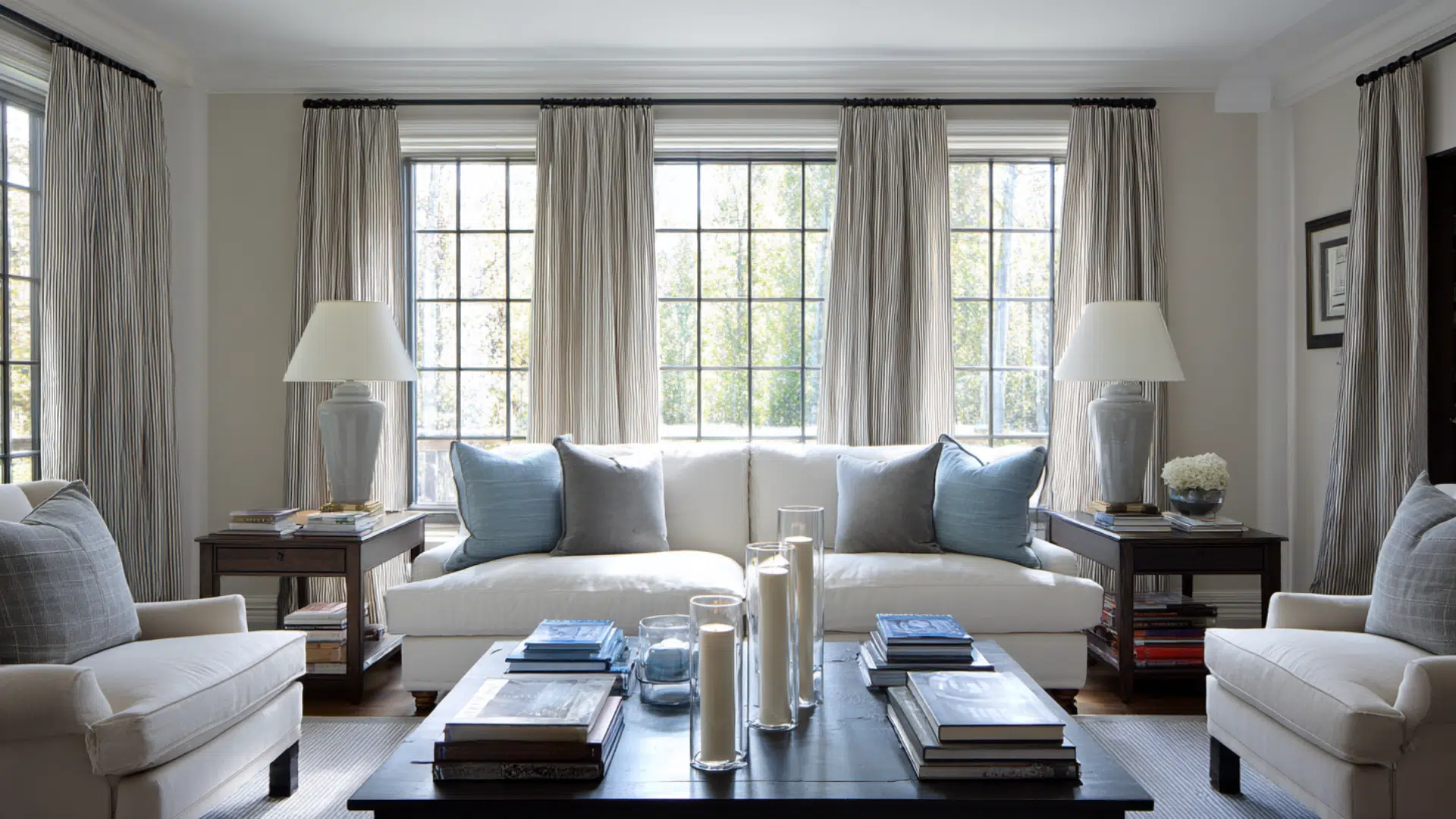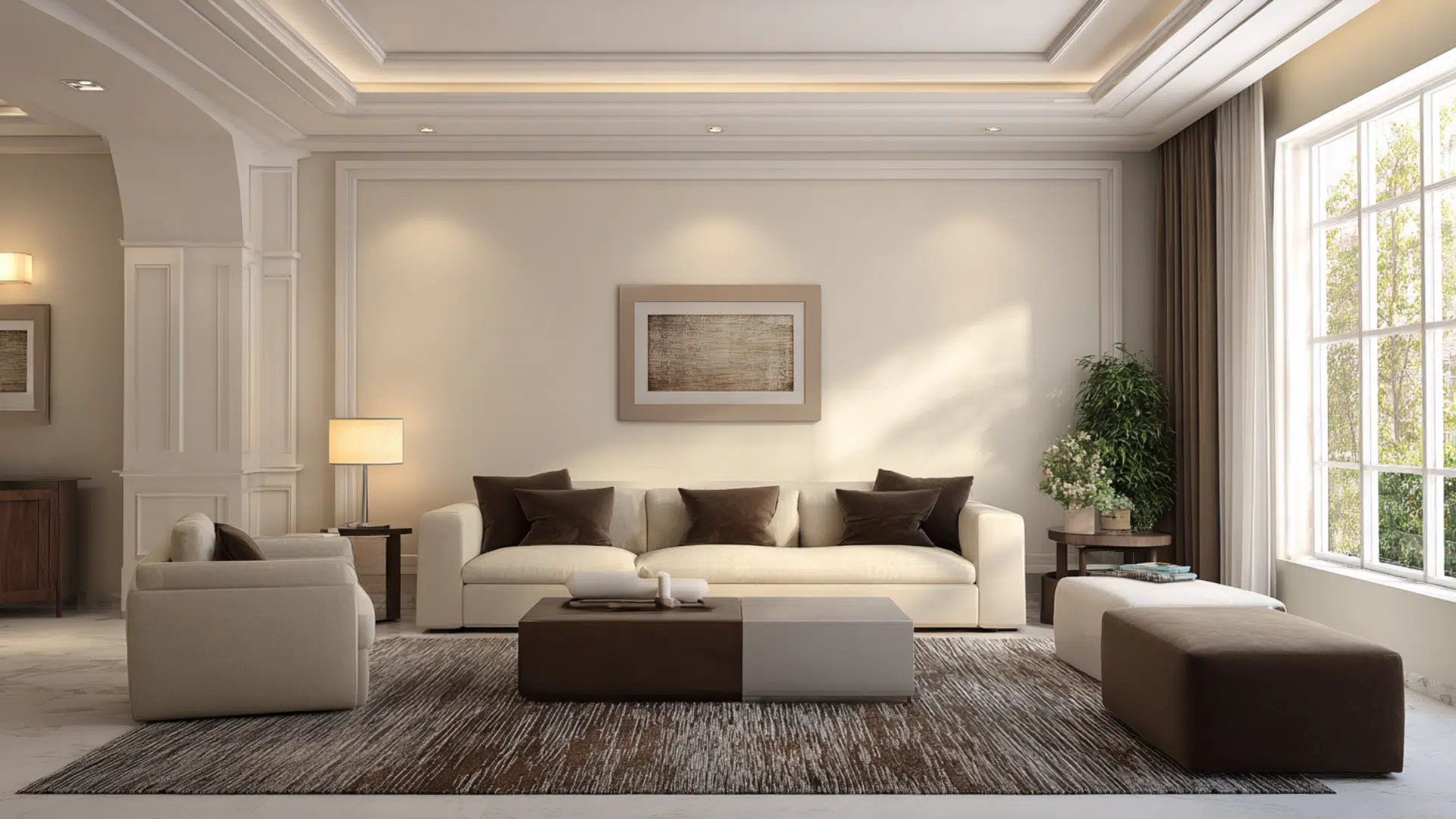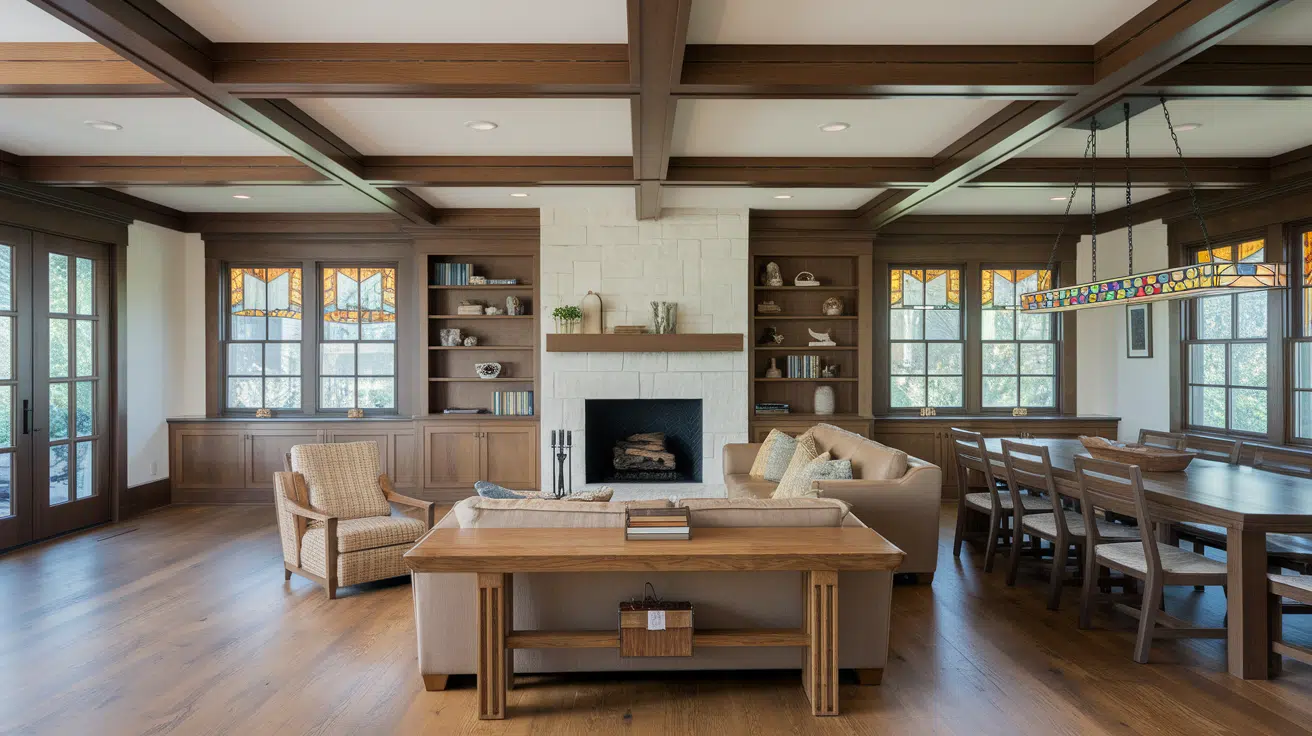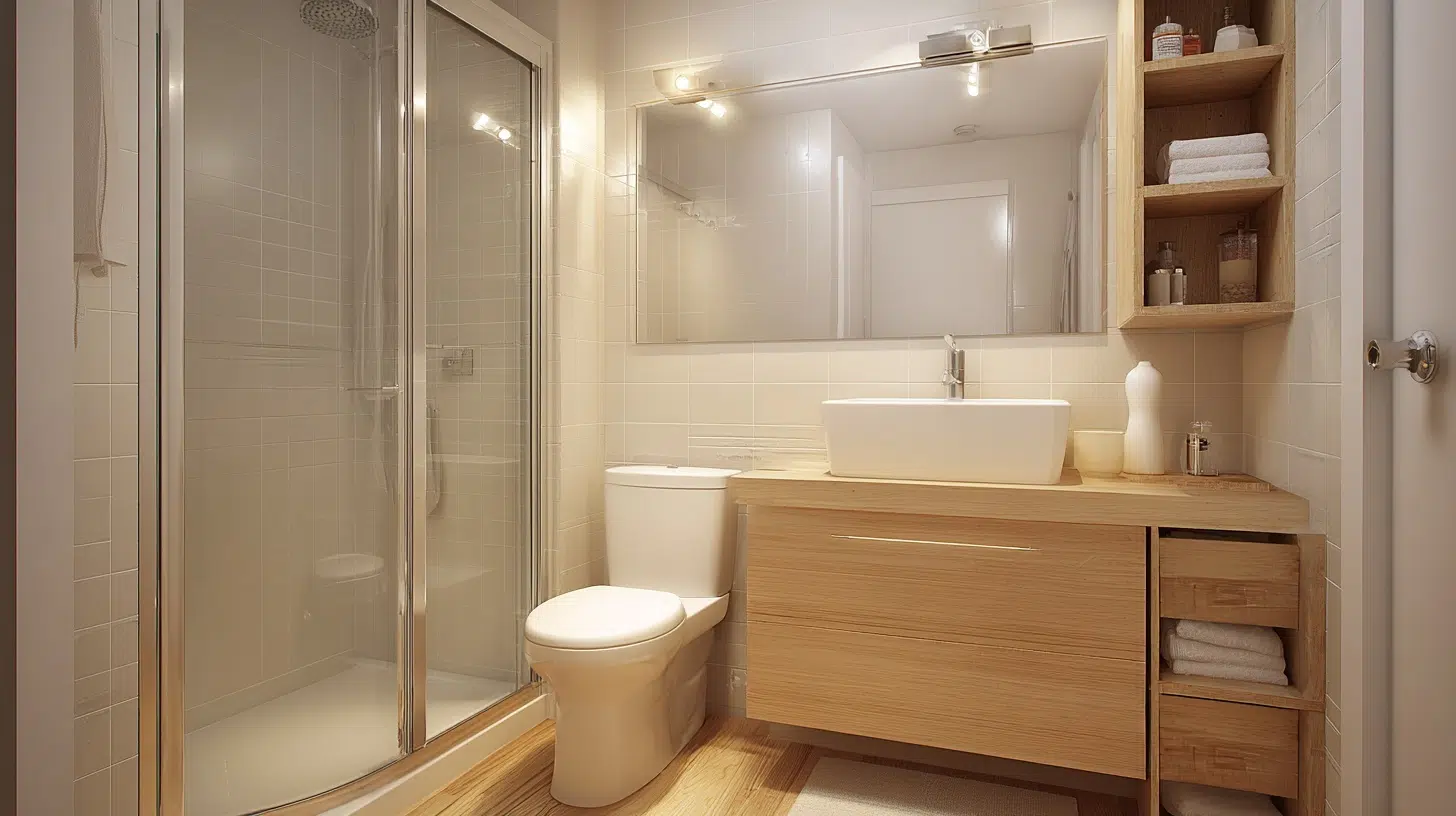Walk into any room that feels calm and well-organized, and you’ll probably notice one main design principle in action. Symmetrical balance creates that sense of order that we all crave in our homes.
Some spaces feel comfortable, others off-kilter, even if we can’t explain why. Using symmetrical balance can turn any room from chaos to calm.
In this blog, you will learn how to implement this symmetrical balance, its principles, and practical tips to avoid all common mistakes.
Symmetrical Balance in Interior Design
In interior design, balance is about distributing visual weight so a room feels stable and harmonious.
Symmetrical balance is the most straightforward way to achieve this, where elements on one side of a space mirror those on the other, like twin lamps on a console table or matching chairs by a fireplace.
This style of balance creates a sense of order, formality, and natural visual comfort.
Types of Symmetry
- Bilateral Symmetry: A mirror-image layout where left and right sides match exactly.
- Radial Symmetry: Elements arranged evenly around a central focus, such as a chandelier over a round dining table.
- Translational Symmetry: Repeated elements or patterns spaced at regular intervals, like pendant lights or wall panels.
The following are the pros and cons of Symmetrical Balance.
| Pros | Cons |
|---|---|
| Creates an instant sense of order and calm | Can feel too formal or stiff for casual spaces |
| Easy for beginners to implement successfully | May appear boring without texture or color variation |
| Makes rooms feel more spacious and organized | Requires purchasing matching items, which increases costs |
| Works perfectly in traditional and formal settings | Limits creativity and spontaneous decorating choices |
| Provides effortless appeal that never goes out of style | Difficult to achieve in oddly shaped or small rooms |
The Principles of Symmetrical Balance
Symmetrical balance in interior design is a core principle that will help you apply symmetrical balance like a pro in any room.
1. Equal Visual Weight
Objects on both sides should feel similar in size and importance. A large lamp on one side needs something equally substantial on the other.
This doesn’t mean identical items, but rather pieces that carry the same visual presence and draw equal attention.
2. Consistent Spacing
Maintain the same distances between matching elements on each side. If your left nightstand sits six inches from the bed, the right one should too.
Precise spacing creates that polished, intentional look that makes symmetrical designs feel professional rather than accidental.
3. Color Distribution
Balance colors evenly across the room to avoid heavy spots. Dark colors carry more visual weight, so distribute them thoughtfully.
If you place a navy chair on the left, echo that depth with similar tones on the right to prevent the room from feeling lopsided.
4. Scale Coordination
Maintain similar proportions between mirrored elements and furniture pieces. Tall bookcases work best when paired with equally tall pieces.
Mixing drastically different heights disrupts the symmetrical flow and creates visual confusion that undermines the balance of your design.
5. Central Focal Point
Establish a clear center line or anchor for a symmetrical arrangement. This could be a fireplace, bed, or window that serves as your reference point.
Everything else radiates from this central element, creating that harmonious, mirror-like effect.
Master these principles, and you’ll create rooms that feel naturally balanced and professionally designed.
Asymmetry Vs. Symmetrical Balance in Interior Design
Both symmetry and asymmetry have their place in interior design, but they create completely different moods and feelings.
| Symmetrical Design | Asymmetrical Design |
|---|---|
| Creates a formal, structured feel | Offers a relaxed, casual atmosphere |
| Uses matching pairs of items | Mixes different shapes and sizes |
| Perfect for traditional spaces | Great for modern, eclectic rooms |
| Easier to achieve and maintain | Requires more skill to balance |
| Feels calm and predictable | Adds visual interest and movement |
Practical Methods for Applying Symmetrical Balance
Ready to put symmetrical balance in interior design? Here are methods that work in every room.
1. Mirror Furniture Placement
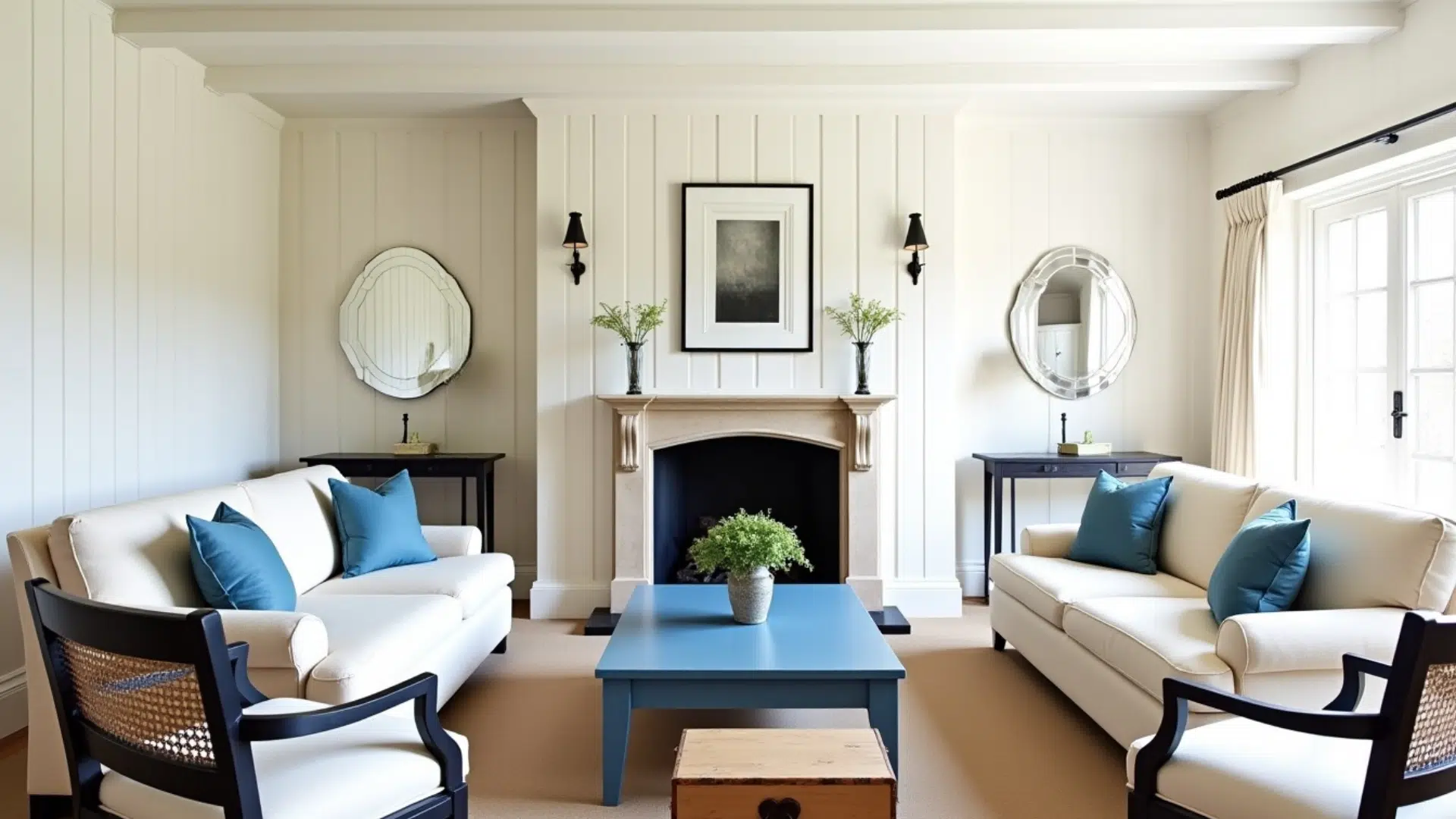
Place identical chairs on either side of your living room fireplace or matching nightstands beside your bed.
In the dining room, position two buffets on opposite sides of the room. This creates instant balance and makes rooms feel more organized and intentional.
2. Use Matching Light Fixtures
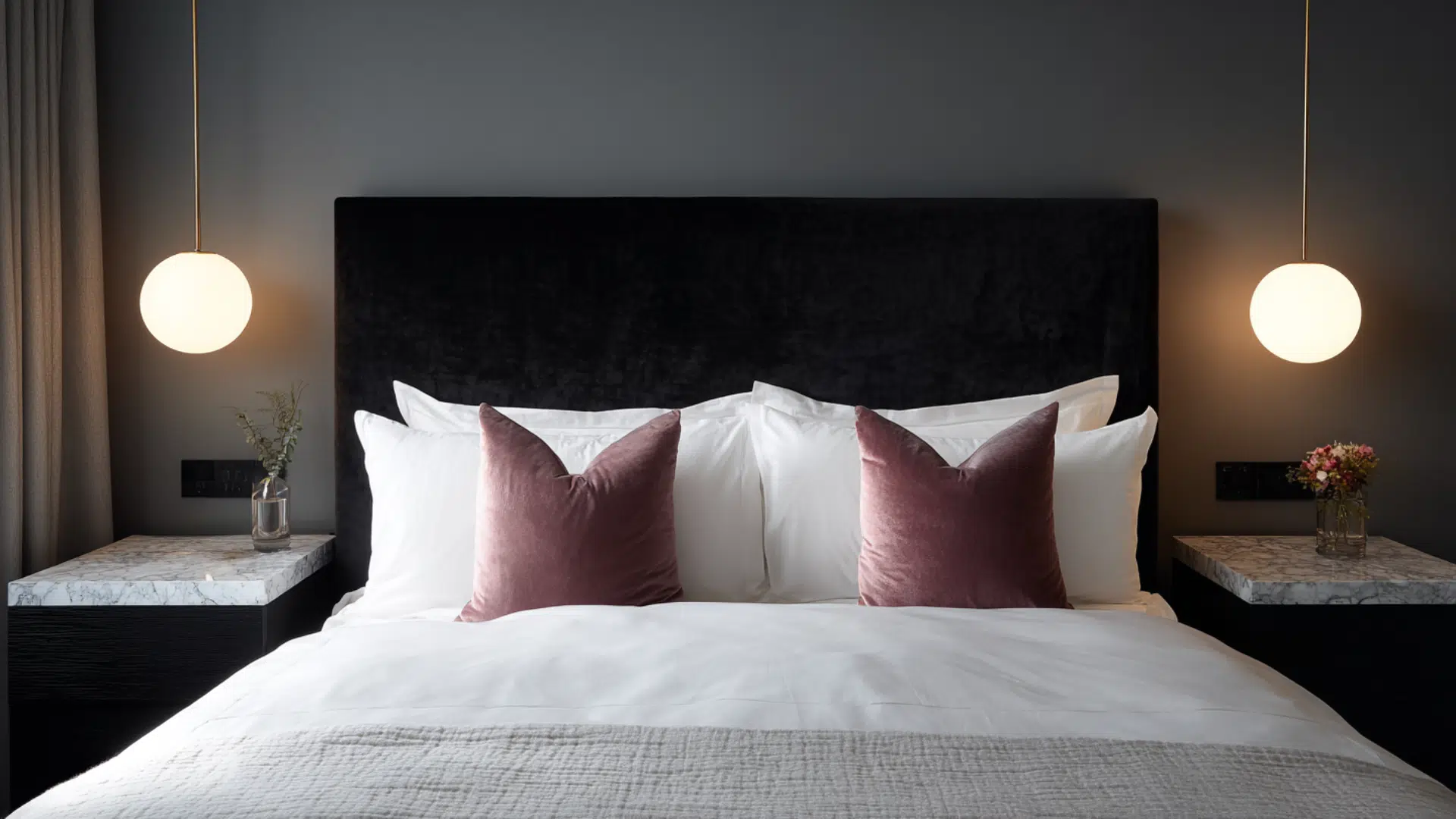
Hang pendant lights in pairs over kitchen islands or matching table lamps in your bedroom.
Symmetrical lighting creates even illumination while adding visual harmony. In bathrooms, install identical sconces on both sides of mirrors for perfect balance.
3. Create Identical Wall Displays
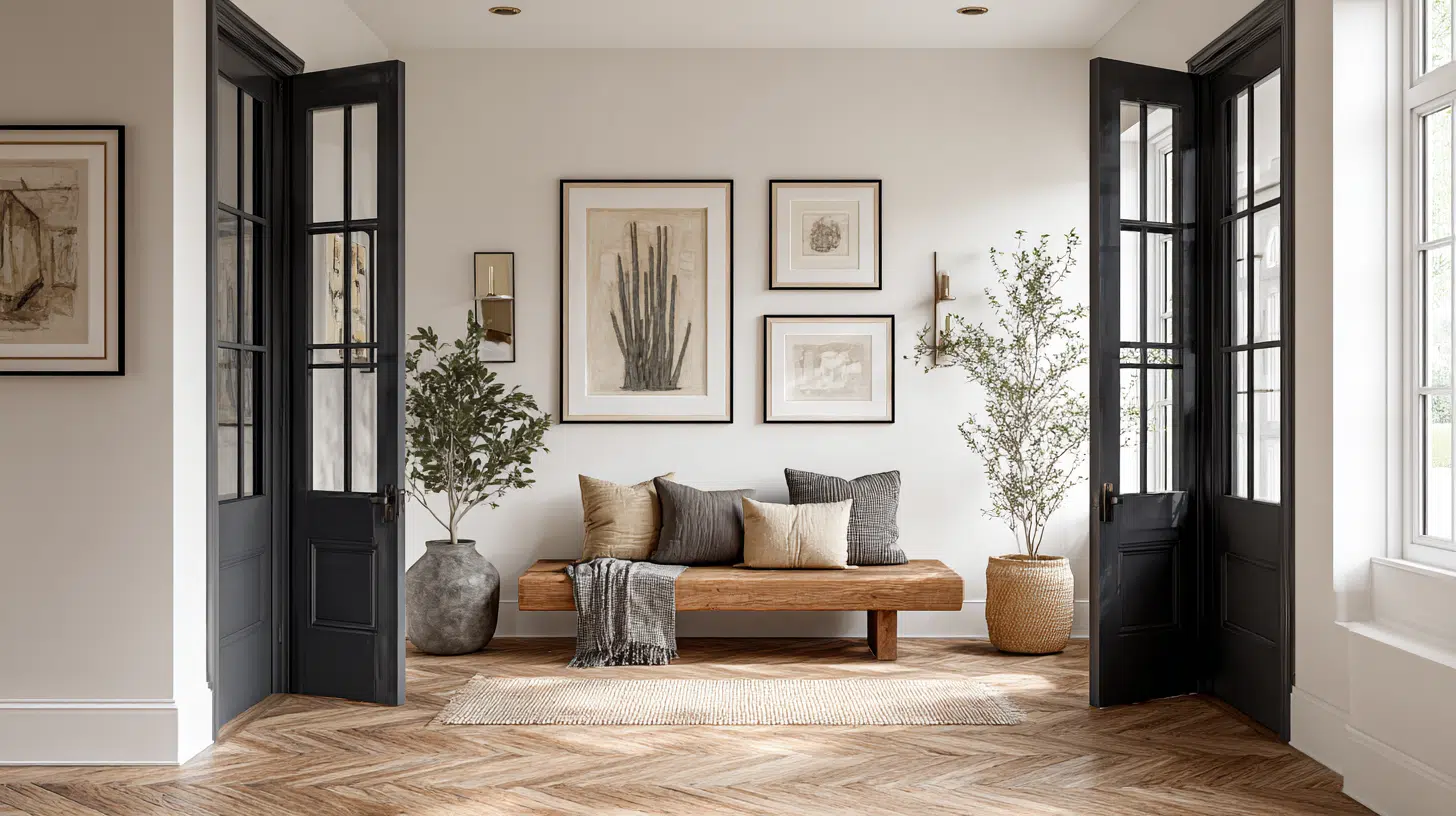
Frame matching artwork or photos and hang them at equal distances from a central point.
This works beautifully in hallways, above sofas, or flanking entryways. Your dining room also benefits from symmetrical art placement above sideboards.
4. Balance Window Treatments
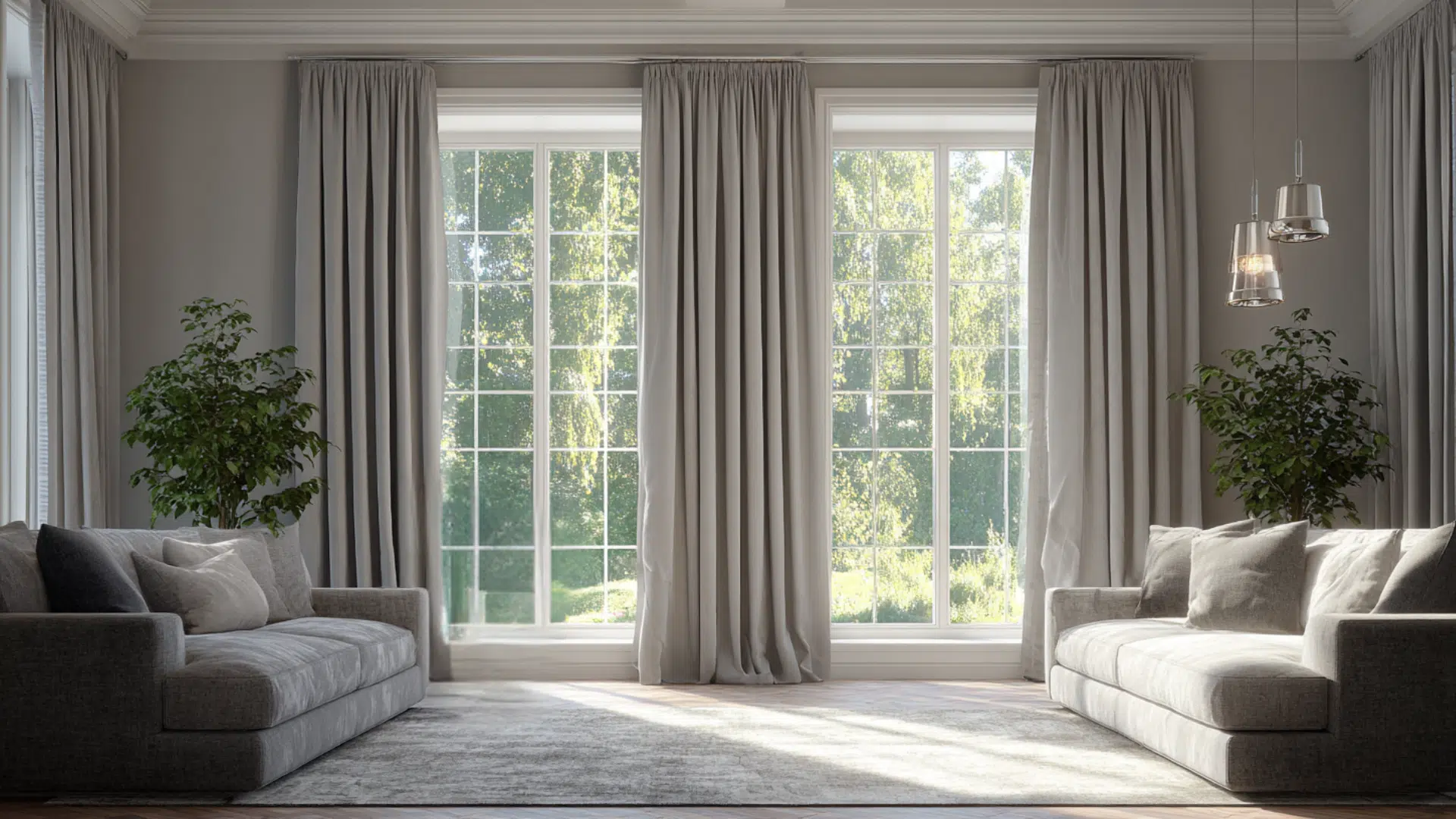
Install matching curtains or blinds on multiple windows in the same room. Maintain consistency in lengths and styles for living rooms and bedrooms.
In kitchens with multiple windows, uniform treatments create a balanced look throughout the space.
5. Arrange Accessories in Pairs
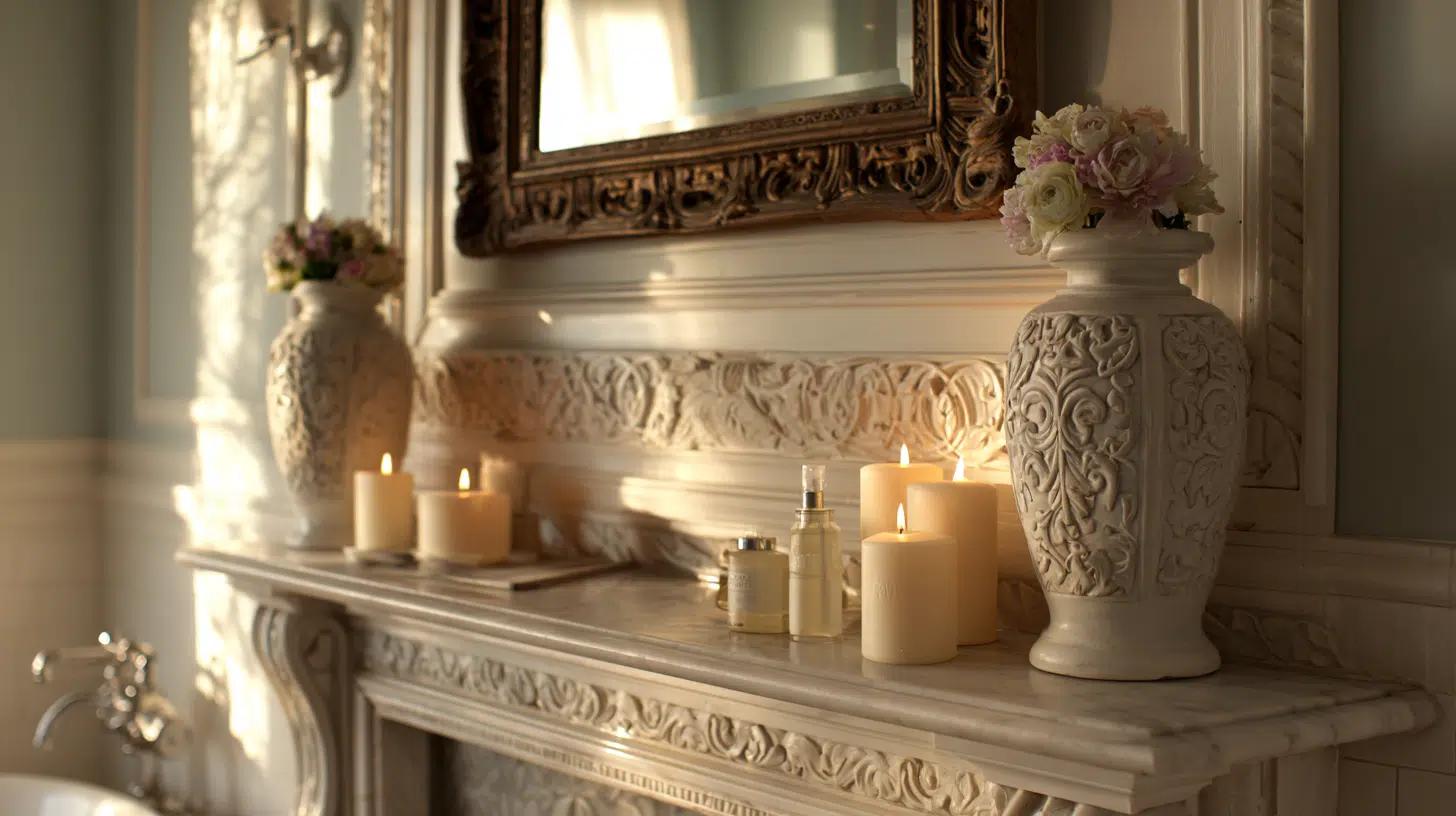
Group decorative objects, such as vases, candles, or books, in matching sets. Place them on mantels, coffee tables, or bookshelves.
Even bathrooms benefit from paired accessories, such as matching soap dispensers or towel arrangements on either side.
6. Position Rugs Symmetrically
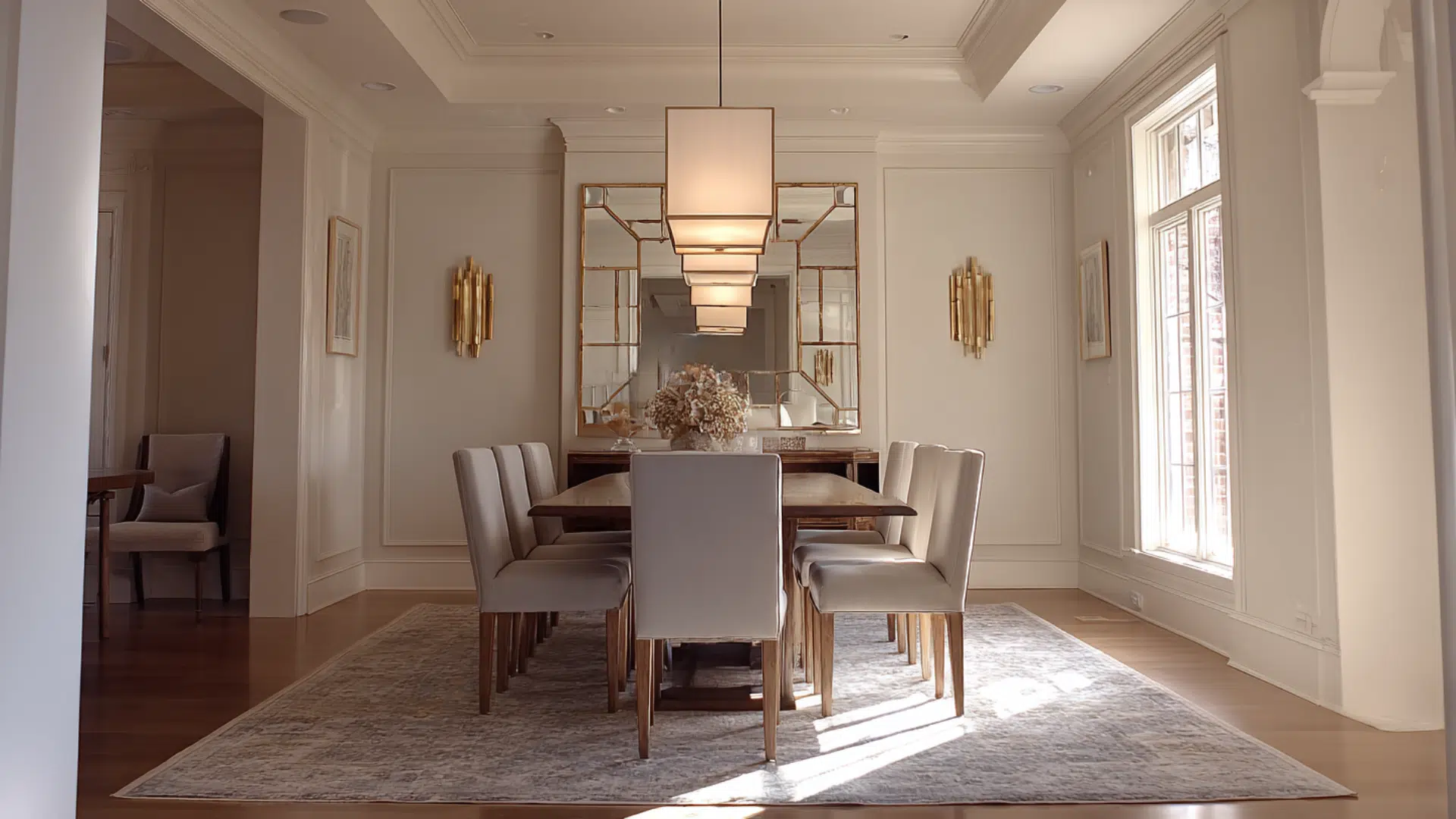
Center area rugs under dining tables or place matching smaller rugs on either side of beds.
Living rooms can feature identical rugs defining separate seating areas. This grounds furniture arrangements and creates visual stability in any space.
7. Install Built-in Storage
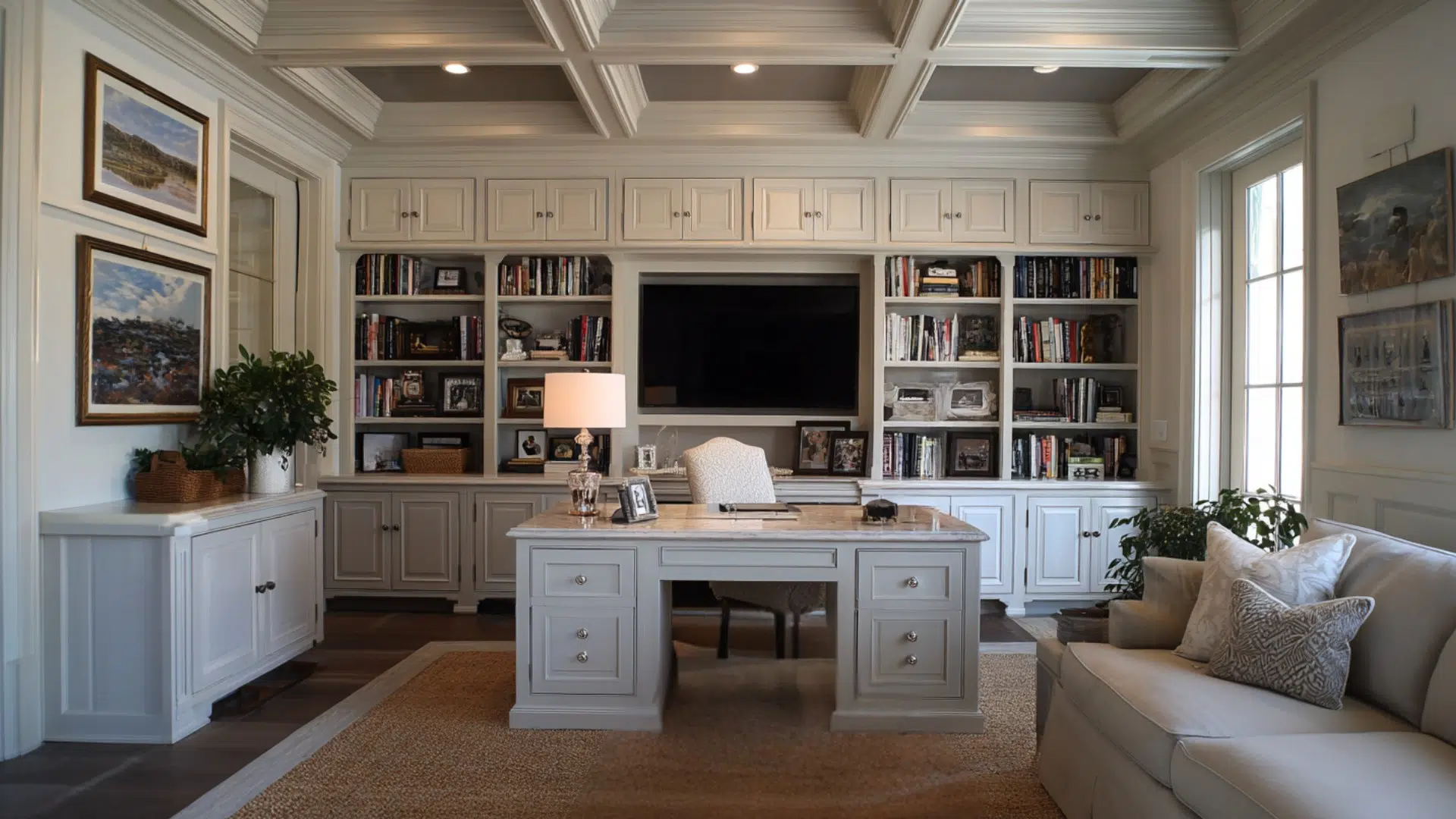
Design matching bookcases, cabinets, or shelving units on opposite sides of rooms. Kitchen islands with identical storage on both ends work perfectly.
Bedrooms benefit from symmetrical closet systems or matching wardrobes flanking the sleeping area.
8. Create Balanced Seating Arrangements
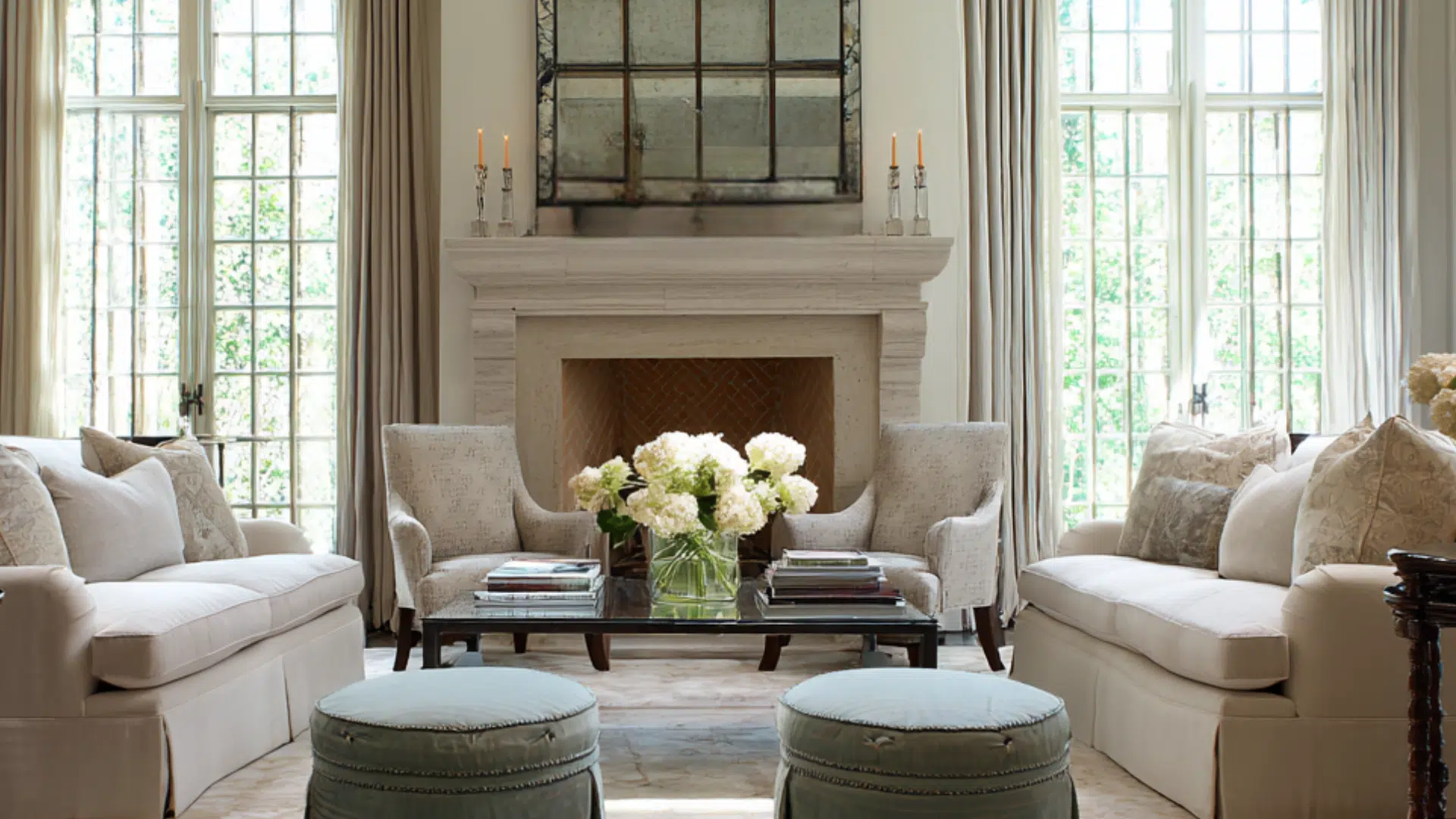
Arrange identical chairs across from each other or place matching sofas facing inward. Dining rooms typically feature symmetrical seating arrangements around tables, often with a central focus point.
Living areas feel more formal and organized when seating creates mirror-image arrangements.
9. Design Symmetrical Landscaping Views
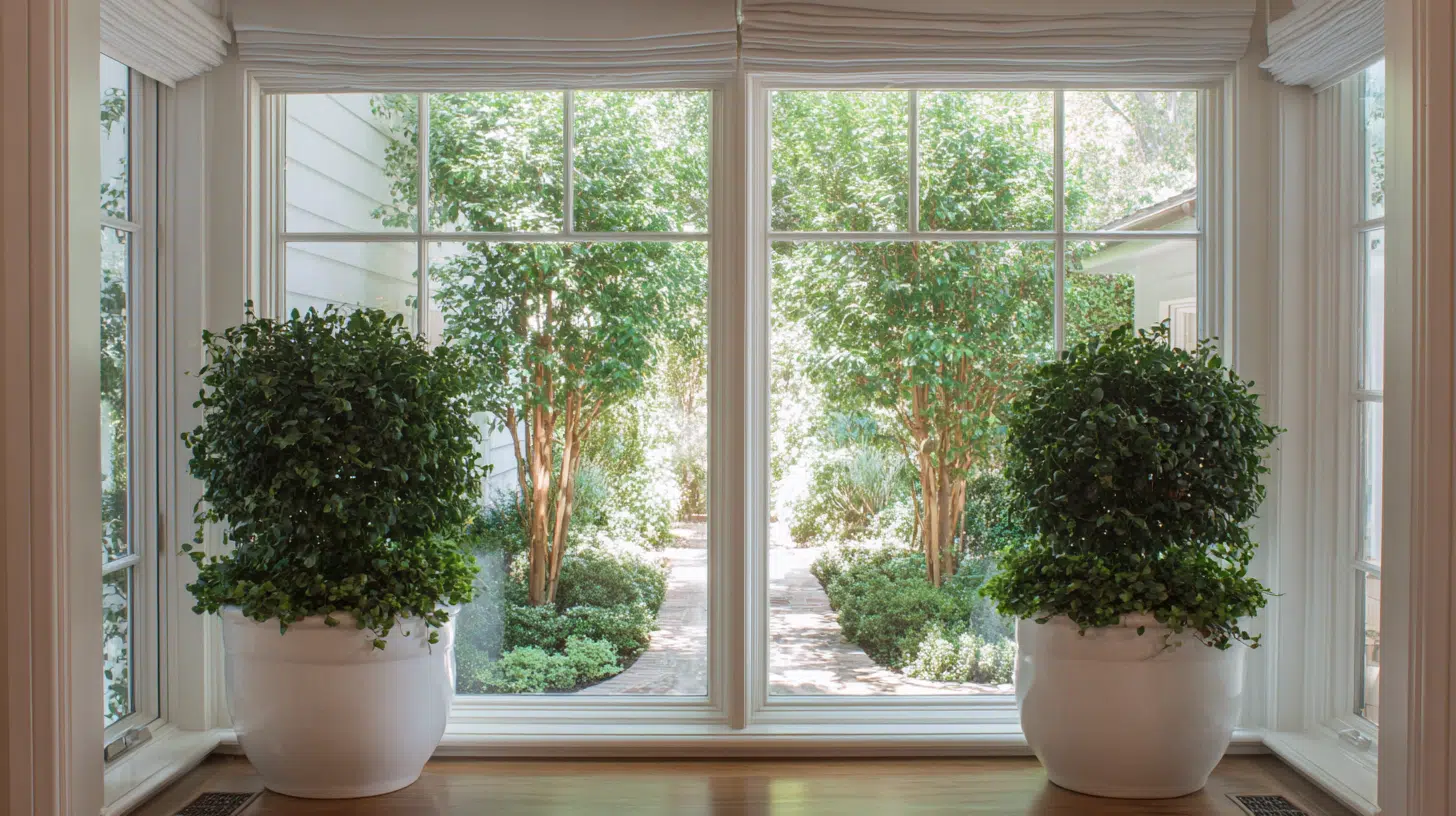
Plant matching trees or shrubs that are visible through windows to extend the balance of the interior outdoors.
Kitchen windows benefit from symmetrical herb gardens or matching planters. This creates a seamless connection between indoor symmetry and outdoor views, achieving a harmonious balance.
Radial Symmetry and Radial Balance
While both concepts involve circular arrangements, radial symmetry and radial balance work differently in interior design.
| Radial Symmetry | Radial Balance |
|---|---|
| Elements are identical around the center point | Elements vary but feel equally weighted |
| Creates perfect mirror images in all directions | Uses different items with similar visual impact |
| More formal and structured appearance | Offers flexibility and creative freedom |
| Requires exact matching of all elements | Balances through color, size, and texture |
| Less common in home interiors | More practical for everyday room design |
Other Principles of Interior Design
Symmetrical balance is just one piece of the puzzle. Knowing these additional principles helps you create truly well-designed spaces.
Every room needs a focal point like a fireplace, artwork, or architectural feature to draw attention. Without emphasis, spaces seem directionless and lack personality, making it hard to focus.
Rhythm creates visual flow by repeating elements throughout a space consistently. Use the same color in different areas to guide eyes around rooms.
Contrast
Mixing elements like light and dark colors, rough and smooth textures, or large and small objects adds visual interest. Contrast prevents rooms from feeling flat or monotonous. It makes features pop and creates dynamic energy in interiors.
Proportion
The relationship between objects and space is crucial. Oversized furniture in small rooms feels overwhelming; tiny pieces in large spaces seem lost. Proper proportion creates harmony with the room and furnishings.
All elements should work together for cohesion. Unity means furniture, colors, textures, and accessories complement instead of compete, tying everything together to make your space feel intentional and complete.
Harmony means nothing clashes or feels out of place. Rooms should tell one clear story. Unity creates calm, collected spaces where everything belongs together perfectly.
Tips for Effective Use of Symmetry
- Start small with accessories before tackling major furniture pieces
- Mix textures within symmetrical arrangements to prevent boring repetition
- Leave breathing room between matched elements for visual clarity
- Consider room proportions when deciding on symmetrical element sizes
- Break perfect symmetry occasionally with subtle variations for interest
Wrapping It Up
Mastering symmetrical balance turns your home from ordinary to extraordinary.
You now have the tools to create spaces that feel calm, organized, and professionally designed.
Begin with one room, practicing techniques like matching lamps, pairing accessories, or creating wall displays. Mix textures and occasionally break rules to avoid rigidity.
The beauty of symmetrical balance in interior design is its simplicity. It’s forgiving for beginners yet calm enough for experienced decorators.
Your guests will notice the difference, even if they can’t explain why your rooms feel so inviting.

